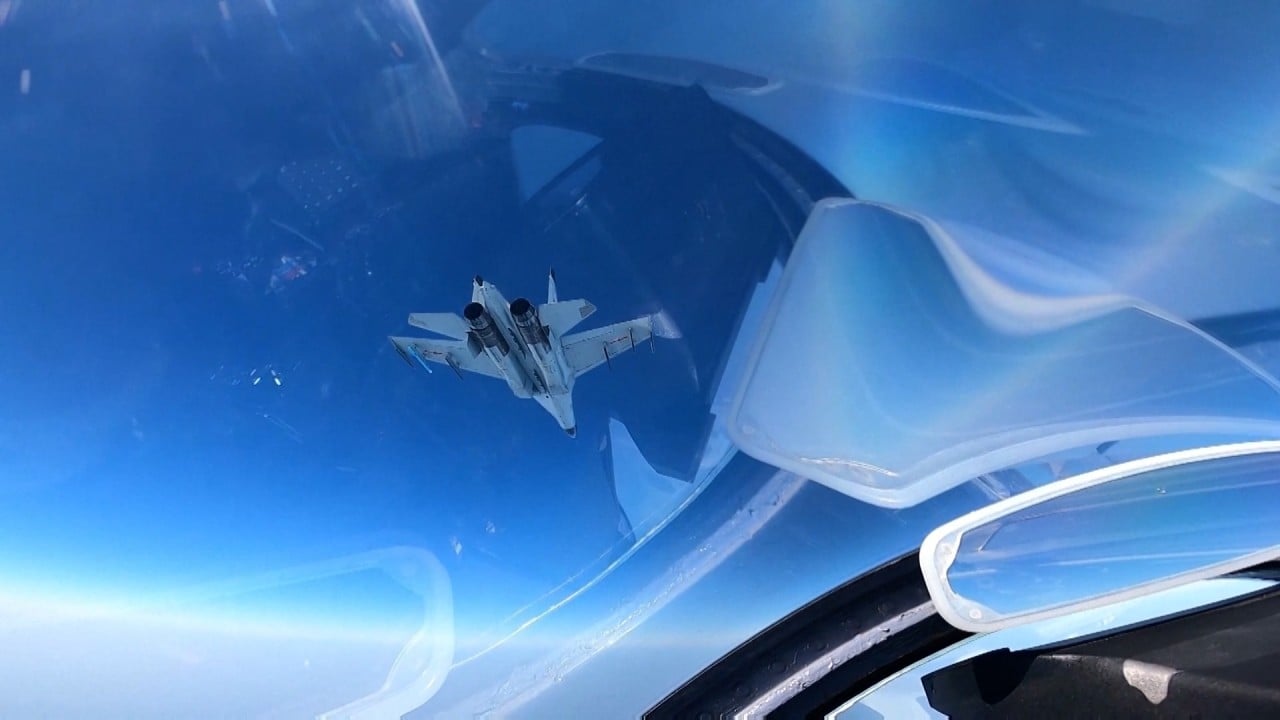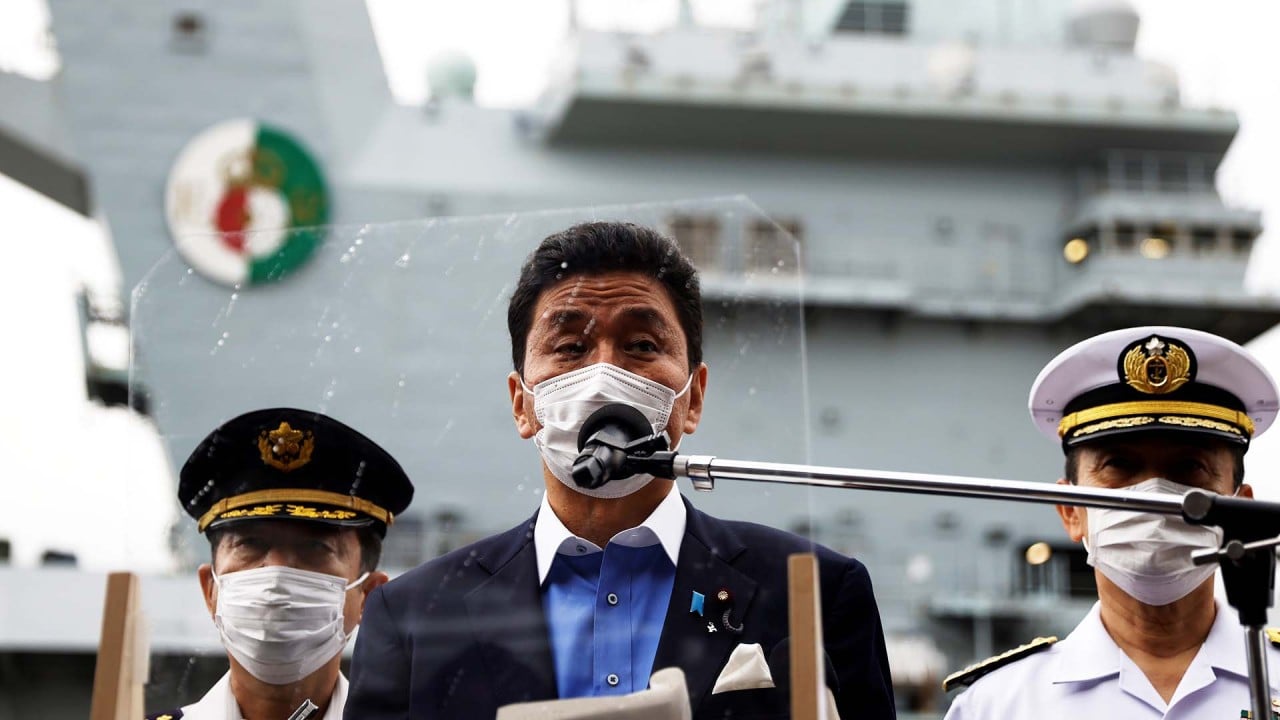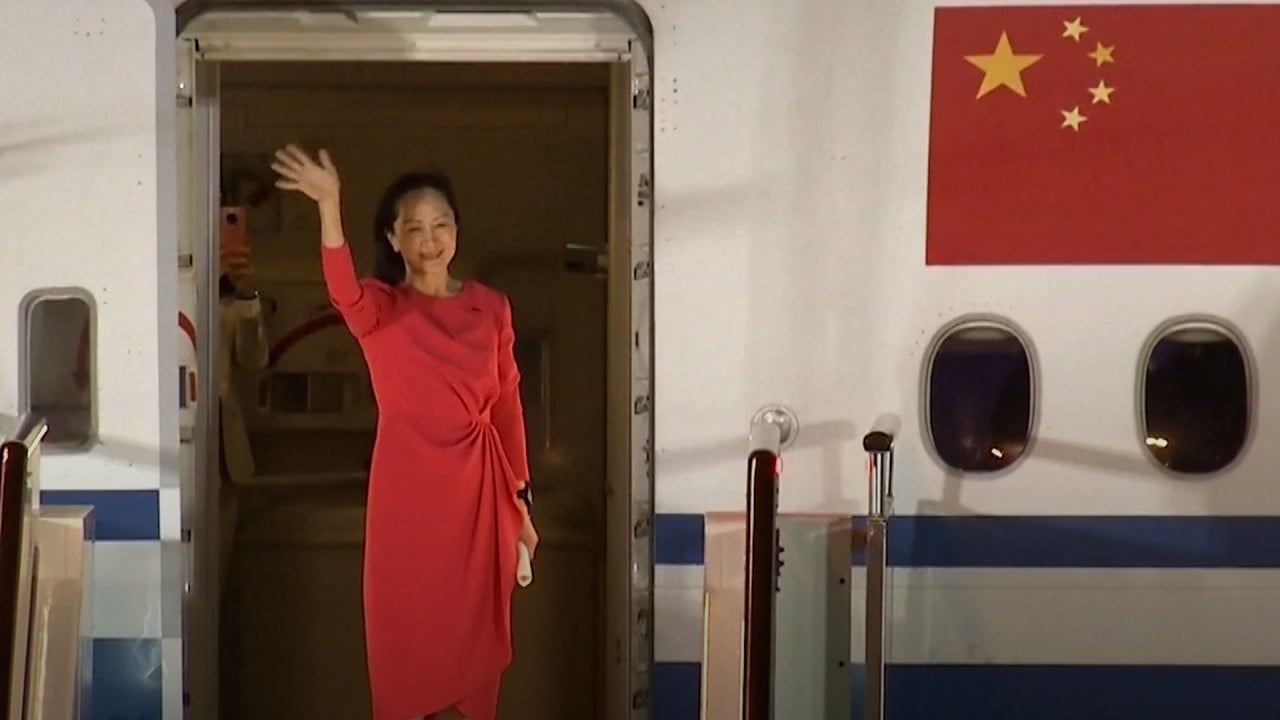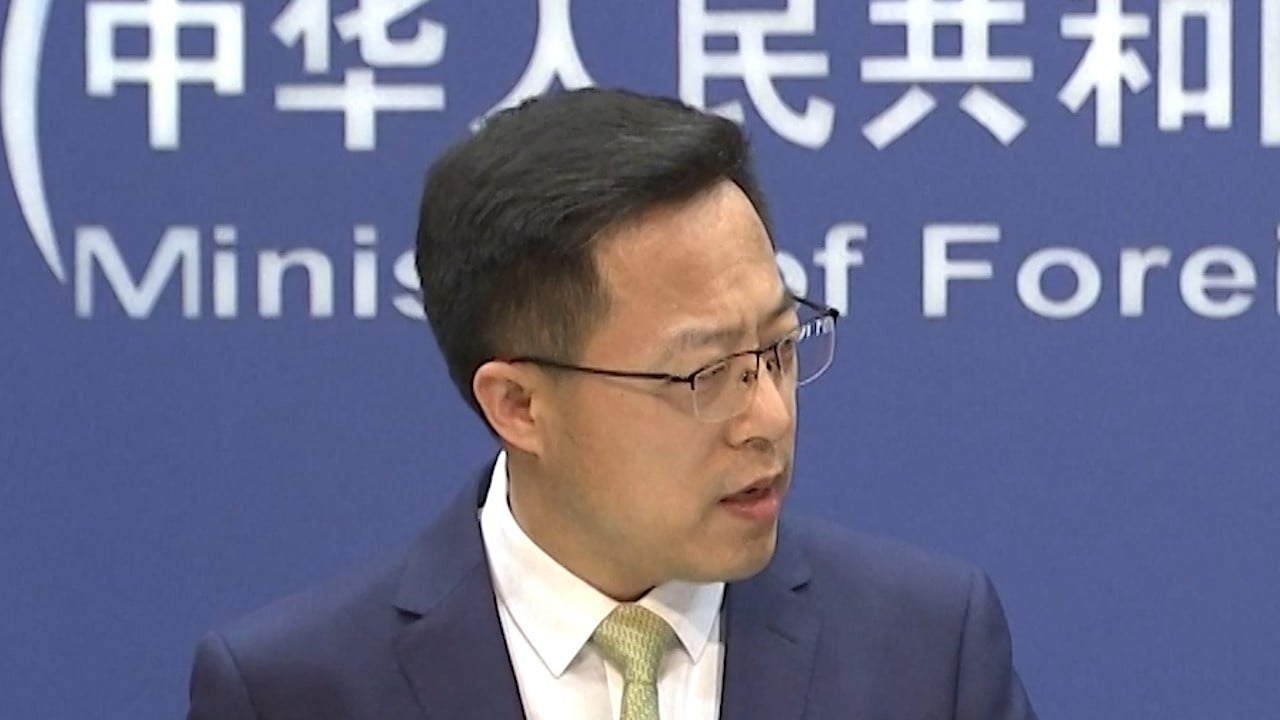
What will US-Canada warships transit slammed by China mean for peace in the Taiwan Strait?
- First ever joint transit by US and Canadian navies seen as a ‘breakthrough’ in Biden administration’s strategy for a united front against Beijing
- Move comes amid intensifying PLA sorties into Taiwan’s air defence zone, sparking worries about both regional stability and Canada’s ties with China

01:22
‘The toughest situation I have seen in more than 40 years,’ says Taiwan’s defence minister
Questioned on last week’s joint transit, Chinese foreign ministry spokesman Zhao Lijian said Canada should pay greater attention to its own interests and relations with China, and not be an accomplice to others.
“This [operation] is not a commitment to freedom and openness, but a deliberate interference with and destruction of regional peace and stability, which is seen clearly by the international community,” Zhao told reporters on Monday.

01:37
China’s PLA conducts air force drills after US warships sail in contested South China Sea
The US military said its Arleigh Burke-class guided missile destroyer USS Dewey along with the Canadian frigate HMCS Winnipeg sailed through the narrow waterway separating the island of Taiwan from the Chinese mainland on Thursday and Friday.
Although this was the tenth such transit by US warships this year alone, it was the first coordinated military action between the US and an ally in the Taiwan Strait, over which Beijing dispatches warplanes on patrol and monitoring missions almost daily. Beijing regards self-ruled Taiwan as its territory and has never renounced the use of force to bring the island under its control.
Will Beijing sharpen its laws to punish ‘Taiwan separatists’?
On Sunday, the Chinese People’s Liberation Army condemned the US and Canada for sending warships through the Taiwan Strait, saying they were threatening peace and stability in the region.
“The United States and Canada colluded to provoke and stir up trouble … seriously jeopardising [the] peace and stability of the Taiwan Strait,” a spokesman for the PLA’s Eastern Theatre Command said.
“Taiwan is part of Chinese territory. Theatre forces always maintain a high level of alert and resolutely counter all threats and provocations.”
This comes as Beijing has ramped up pressure against Taiwan since last year. It sent almost 150 warplanes into Taiwan’s air defence identification zone over a four-day period beginning October 1, prompting the island’s military to scramble jets and deploy missiles to warn them off.

00:00
Taiwan denounces mainland China for ‘over the top’ flights into island’s air defence zone
“Although the joint transit made by US and Canadian warships itself was limited in both power and scale, it reflected a significant shift in the US strategic approach in countering China,” said Liu Weidong, a veteran US affairs expert from the Chinese Academy of Social Sciences. “It’s a breakthrough, meaning the US has succeeded in convincing more countries to go against China in this sensitive waterway.”

More significantly, last week’s action was in line with Biden’s diplomatic approach, which emphasises the importance of allies when dealing with shared threats, in stark contrast to that of his predecessor Donald Trump, Liu said.
“The Biden administration had made use of the stormy international situation, in which China is now in an inferior position to achieve its goals – and this has undermined Chinese influence,” he added.

02:26
British aircraft carrier HMS Queen Elizabeth visits Japan amid China worry
Ding Yifan, former deputy director of the Institute of World Development at the State Council’s Development Research Centre, said the joint transit would “definitely” have a negative impact on China-Canada relations, though Beijing is not likely to take any concrete action against Ottawa.
“The US may continue to manage to pull [together] allies who are willing to engage in its Indo-Pacific strategy to stir up trouble together in the region, but such moves are essentially symbolic and do no substantial harm to China,” Ding said.

03:53
Chinese netizens swoon over hero’s return and husband’s greeting for Huawei’s Meng Wanzhou
76 per cent of Canadians want Huawei 5G ban, after two Michaels’ release

01:19
After Quad summit discusses China threat, Beijing says ‘cliques’ drive wedge between countries
Another international affairs expert who declined to be named was concerned the situation in the Taiwan Strait would deteriorate further.
“The military presence of the United States and its allies in the Taiwan Strait will undoubtedly intensify the political and security relations between China and these countries, leading to a higher likelihood of collisions and conflicts in the strait,” the expert said. “And China will definitely respond more strongly. Beijing is expected to exert more pressure on the island by such means as sending more military planes and vessels.”


